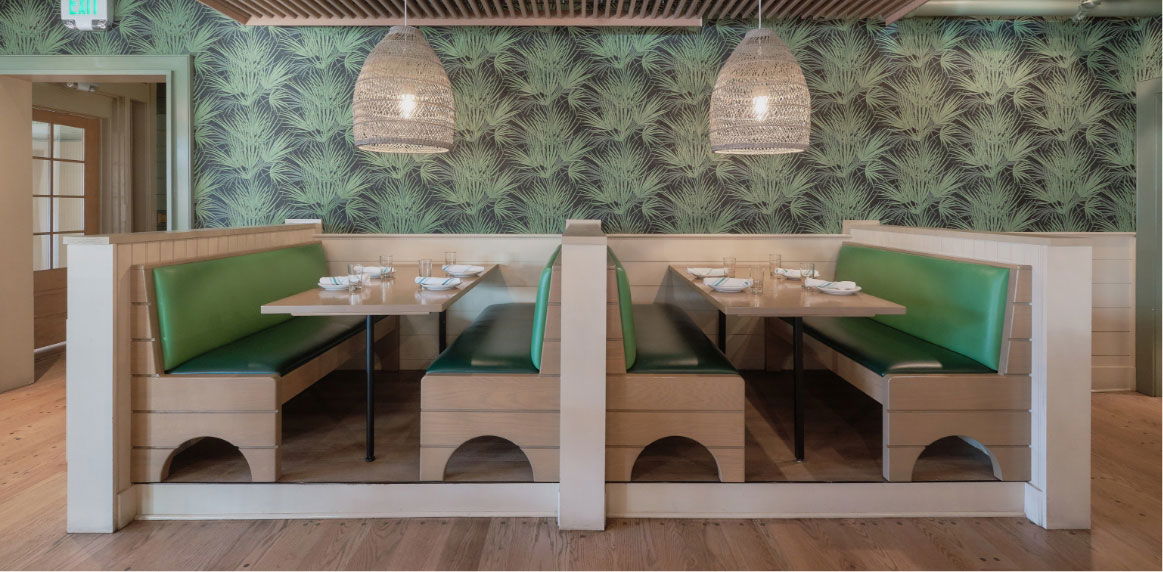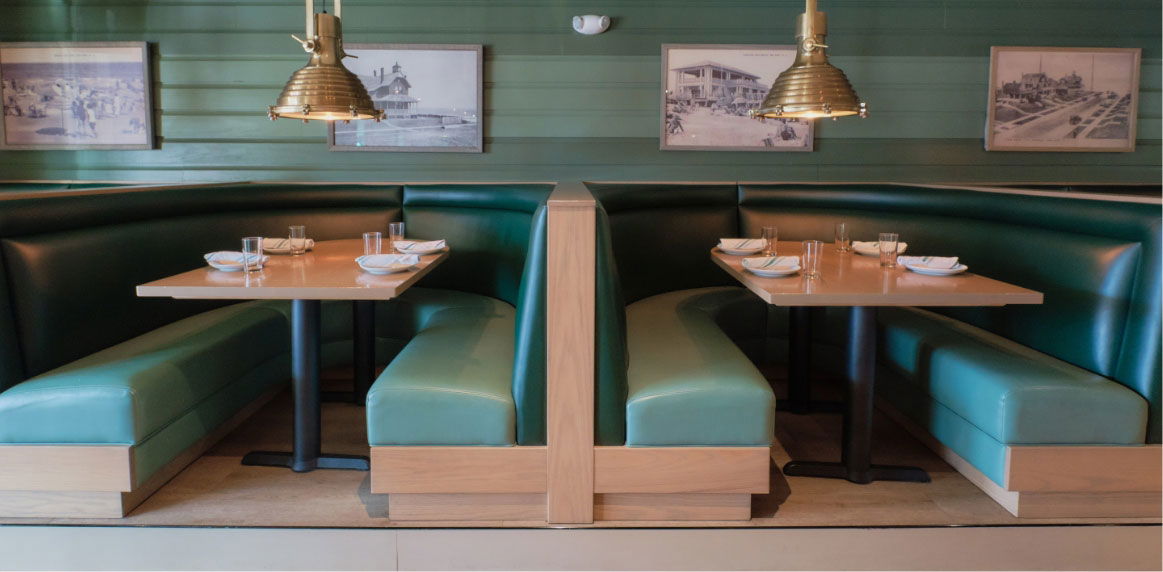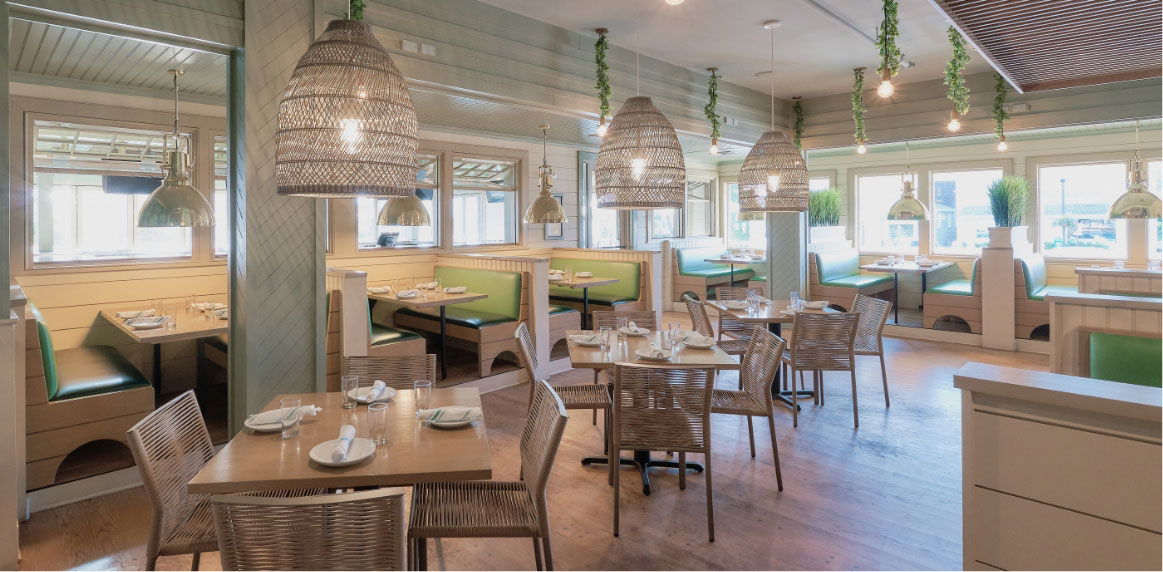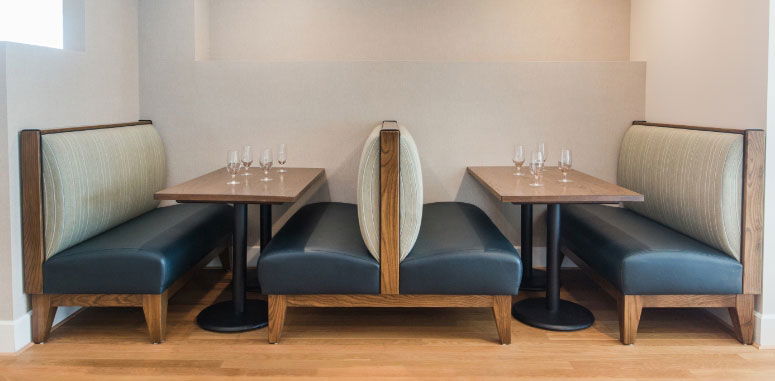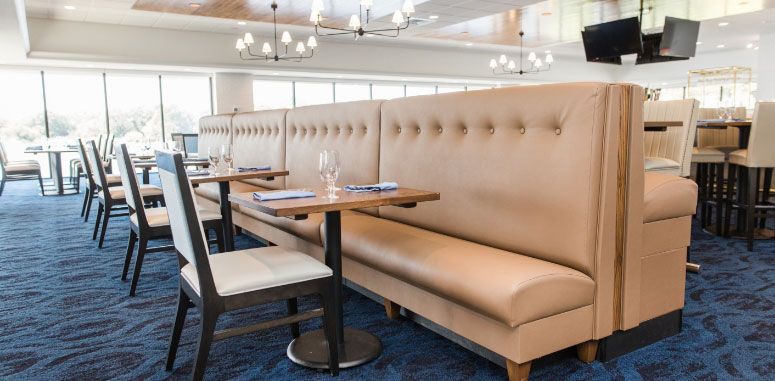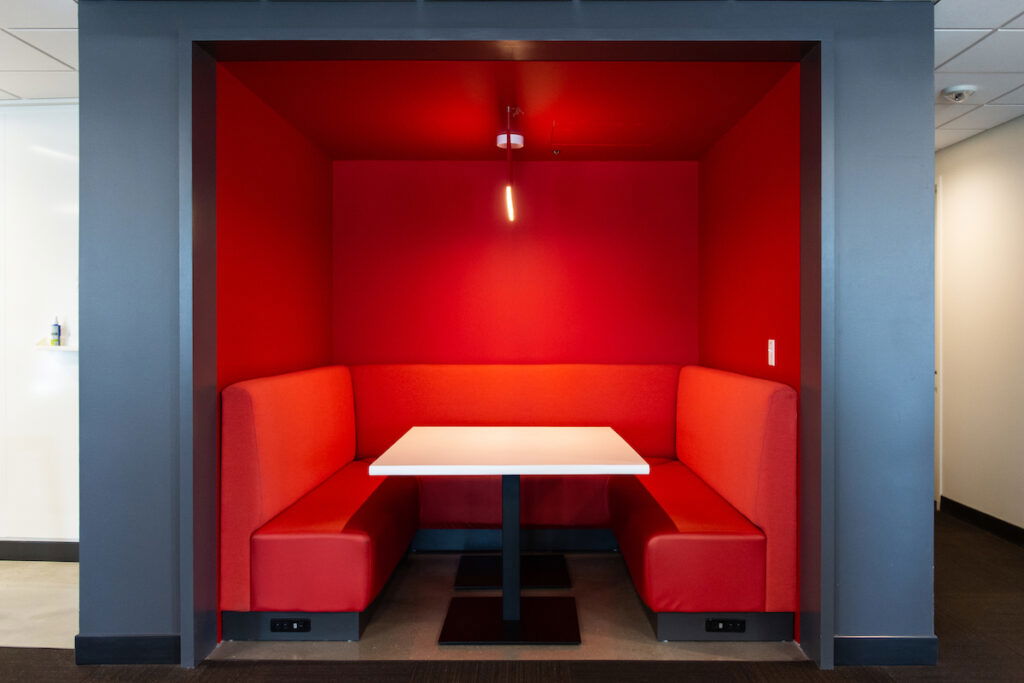Decidedly casual yet refined, coastal charm is a timeless design style that can be found in seaside and landlocked locales alike. It embodies the relaxed, breezy quality of a chic, oceanside retreat, transporting you to a beachy paradise, but without veering into a too-obvious nautical theme that risks feeling overdone.
We’re going to be diving into a few of our favorite sources of coastal design inspiration, exploring three restaurant interiors that exemplify the understated elegance and comfort of this popular style.
What is Coastal Charm?
Coastal style (often referred to as “coastal charm”) is inspired by the pleasantly serene, comfortably cozy experience of relaxing in the perfect seaside getaway. Often incorporating subtle nautical touches through color palettes, textures, and other elements, coastal charm interiors feel put-together, but never fussy. They are distinctly livable while still being stylish, taking cues from classic American style.
The color palette for coastal style is primarily made up of a range of lighter shades, focusing on cool hues that are reminiscent of the natural tones of the beach and ocean. Neutrals are often a staple in coastal charm interiors, though it is certainly possible to lean towards a more colorful design as well. As you would imagine, a broad spectrum of blue and green tones — from deep sea navy to pale green — are frequently incorporated into coastal-inspired interiors. Crisp whites and creams are also foundational in a coastal style color palette, as are light sandy browns.
Brass accents (both polished and unlacquered) are often used, as a way to tie in a nautical element without going overboard. Natural textures, such as wicker, rope, and wood, are another key characteristic, and pale wood tones such as white-washed wood and teak create a pleasantly weathered look. In some coastal chic interiors, designers find creative ways to bring the outdoors in: for example, hanging driftwood as wall art or using cedar shakes as an interior accent.

Fabrics for coastal interiors tend to lean towards lightweight, easy-breezy textiles, such as linen and cotton. Underfoot, jute and sisal rugs offer both practicality (in their impressive durability) and a texturally interesting style. Furniture can be a mix of plush seating, such as upholstered booths and dining chairs, and wood-top tables boasting clean, contemporary lines.
A coastal-style interior welcomes you to kick back, put your feet up, and relish each moment, creating an inviting space in which you can unwind and enjoy time spent in good company
Coastal Design Inspiration
One of the advantages of coastal charm as a design style is its versatility, and the ways in which the foundational concept can be adapted to suit a specific vision or desired “feel.” When you search for restaurants with coastal-style interiors, you can find exceptional examples ranging from upscale fine dining to laid back, quick-service cafes.
Here are just a few examples of coastal charm style, fabulously executed in three restaurants located in the eastern United States.
Rod’s Tavern
From the moment you step through the doors of Rod’s Tavern in Sea Girt, New Jersey, you’re pleasantly swept away by layered shades of cool, sea-glass green. The green hues range from the deep emerald of seaweed to faded, almost-seafoam shades.
Throughout the restaurant, neutral woods are used to warm up the space, with light finishes selected for the flooring, tables, and booth panels. Custom-built booths create a mix of inviting, intimate seating areas, including U‑shaped booths in contrasting green upholstery. The lighting is a combination of brass pendants and basketweave pendants, with both styles contributing to the coastal feel in their own way. Whereas the brass pendants have a distinctly maritime feel, the texture and lightness of the basketweave shades bring in an element of nature.
The millwork and molding, which varies through the restaurant, is the epitome of New England nautical design. Clean lines draw the eye through the space, ensuring that no detail is missed. Finally, portions of the restaurant are wallpapered in a botanical print that resembles seaweed, a final touch that only elevates the space as a whole.

The Salt Line
he interior color palette of The Salt Line is made up of light, airy shades, from the gray-green walls and crisp white trim to the wood floors and moss-hued booth upholstery. Large windows allow for ample natural light, while architectural arches enhance the sense of open space.
In one section of the restaurant, a wall covered in cedar shake boasts a classic dinghy, the repurposed boat now embracing its new life as a conversation-starting art piece. Other nautical touches are more subtle, such as the brass globe pendants and nailhead trim on the dining chairs and booth seating. Windsor-style chairs imbue the dining area with a classic Americana charm, balanced by modern table tops with clean-cut profiles.
The Salt Line’s extended, U‑shaped bar offers seating along both sides, and is a masterpiece of tilework. The majority of the tiled bar is laid in a herringbone pattern (yet another nautical accent), with a weathered brass foot rail and surrounded by simple, yet sophisticated bar stools.
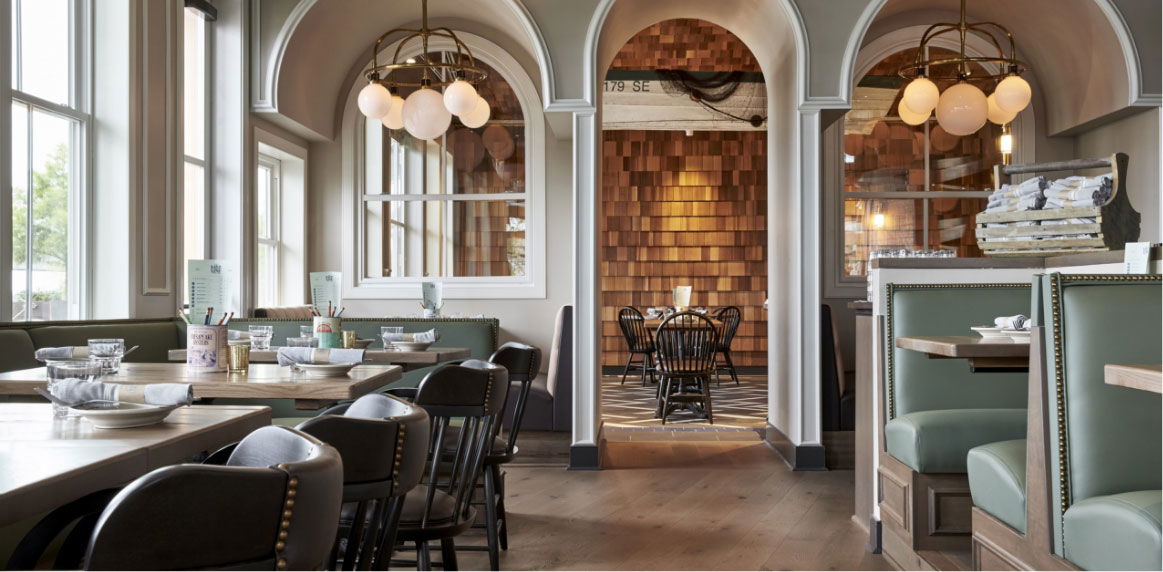
Norfolk Yacht & Country Club
Of course, it seems only fitting that a yacht club would be designed with the concept of coastal charm in mind — and the Norfolk Yacht & Country Club is an outstanding example. The recently-renovated dining area room isn’t necessarily based in the pastel greens and pale blues that are characteristic of the coastal style; rather, it balances a deep navy with lighter shades of sand and beige.
A bold patterned carpet with a wave-like design anchors the main dining room, catching the eye with cobalt and dark navy colors. Bright white walls create contrast with a vibrant blue bar area, where a solid wood bar top adds sailor-friendly flair. Wood elements in the bar height tables, bar stools, and table tops are a spectrum of natural shades and finishes, complemented by varying hues of khaki-colored upholstery.
Although the dining space is a high-traffic area that requires a certain level of practicality, its designers included thoughtful touches that elevate the interior. High-back booths near the bar area have a single row of tufting buttons, achieving a monochromatic look that is anything but basic. The back cushion on another section of booths is a light sea green with white and blue pinstriping, an aesthetic reminder of the vessels in the club’s marina and the region’s regatta history. All of these details come together to present an adventurous take on classic coastal charm, which seems fitting considering the maritime fun awaiting the club’s guests.

